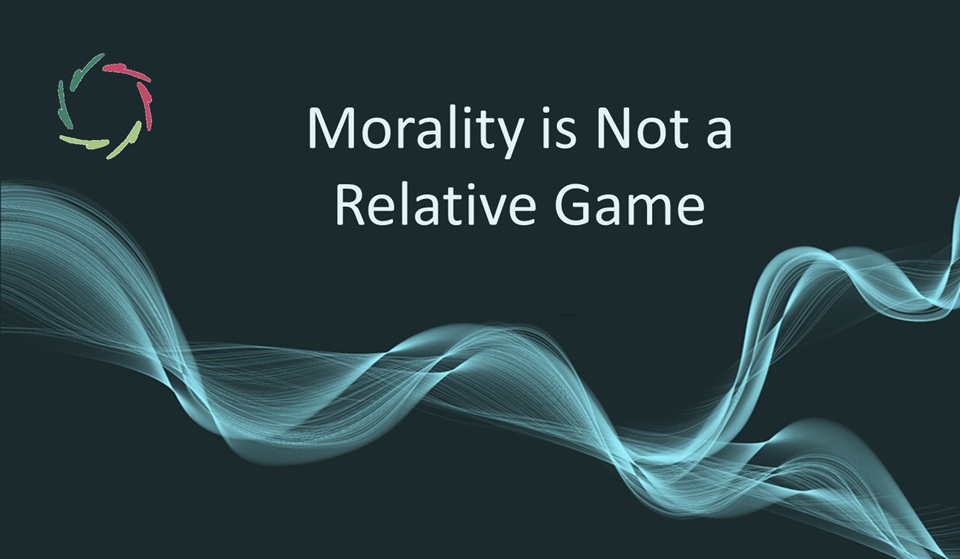From Me to Morality

From inside the brain to very large groups of people, this text tracks the origin of morality through the ages as well as at any single point in time.
Morality is like the Nile
Searching for the ‘source’ finally gets one somewhere far inside a strange continent, where one doesn’t find one source but many. In case of morality, this continent is called ‘brain.’ So, let’s be the Livingstone of morality, but starting from the source(s) and getting to the moral delta into the sea.
When confronted with a moral issue, no ‘moral’ part of the brain gets activated.
Instead, many parts of the brain are triggered that are not straightforwardly linked to morality but to being a social creature, to being an ‘I’ and even to plainly ‘being’. As to the ‘ACE principle’ [see: ‘ACE in a Moral World’], nature continuously reuses what’s already there, combining things and enhancing where needed.
Everything flows, yet we carry our distant past at every moment in the brain.
Staying alive
Your brainstem and hypothalamus (most ‘primitive ‘ parts of the brain) have one clear focus: to stay alive. Eventually, this is where any natural notion of ‘good’ comes from. In order to attain this, of course they need something that ‘lives’ over longer periods of time. But everything changes all the time. Cells divide and die. Structures continuously change. Neuroplasticity comes around at every corner of the brain.
More durable is a striving for ‘homeostasis’ – a kind of wanted-for balance – of the brainy milieu around which everything keeps turning. The perfect homeostasis is never reached, yet as goal, it is durable and engenders a notion of individuality. Which brings us to:
living as an individual.
This ‘individual’ strives to stay alive. For this, it needs to deal with the outside world. The brain, mainly oriented to its own internal milieu, communicates with the outside world through the sensory organs. Two important factors in this:
- ‘Keep it simple’ seems to be nature’s number-1 preferred thread: we can at this point divide everything basically into 1) a striving for pleasure (‘the good’) and 2) an avoidance of pain (‘the bad’). In the brain, we see this realized for instance in 1) the dopamine system (tegmentum, basal ganglia, ventral striatum…) and 2) the pain system (anterior cingulate cortex, insula…).
- ‘Keep it interesting’ seems to be nature’s number-2 preferred thread: through a bazillion of meanings and deeper meanings and conceptual and subconceptual processing towards which the whole brain is being used. That’s OK. It really is interesting.
At least, it has made us into almost endlessly interesting beings.
Motherhood: beyond the individual
The mammalian mother (and father in many cases) now cares for the offspring in a way that the well-being of the latter runs parallel with her own. Her brain reacts as if it’s about herself in her striving for pleasure. Likewise when the little ones appear to be in danger or other need, being to her about herself in her striving for avoidance of pain. In other words: her ‘individuum’, including her notion of ‘good and bad’, encompasses her little ones.
ACE: Adopting. Combining. Enhancing…
This ‘mechanism’ +/- coincides with the need and realization of mate bonding: frequently the caring for the little ones is best done by both parents in order to heighten their chances of survival and success.
Humans also carry this motherhoodly striving within them. Not only as a mother but as a species. It’s in our brain.
Being social
Close kin and primitive groups are a next step, with the motherly one as a blueprint for caring also for others. Being able to grasp the perspective of others is enabled by an ever larger brain (with temporoparietal junction etc.)
We get to more and more a truly moral world.
Morality in larger groups
Frontal cortex helps us to grasp very intricate environments in which ever larger groups can live together. Our brains are not primitive in any part. They have been changing ‘vertically’ all the way through, from the ‘lowest’ to the ‘highest’ parts.
Most importantly, nature granted us the flexibility niche.
Thus, mental sky is our limit. Nothing is stopping us towards a universal morality YET nature always reuses former stages in later ones. Morality at any level intrinsically carries the caring within. For instance, if you bring authority apart from caring, you end up in a chimera and a catastrophe.
We are at the same time animals and angels.


